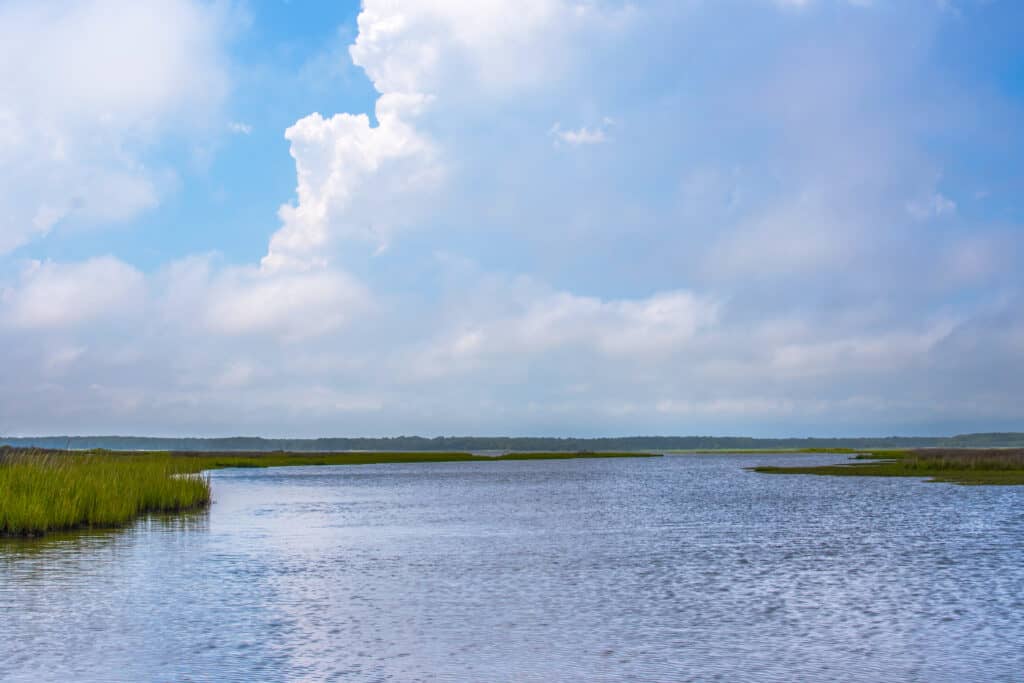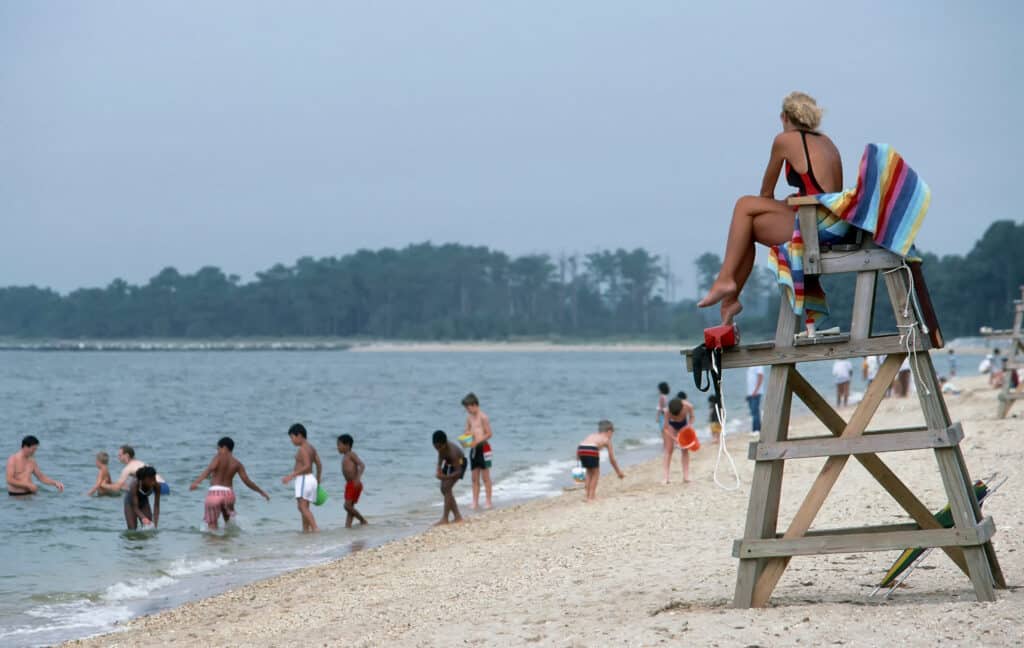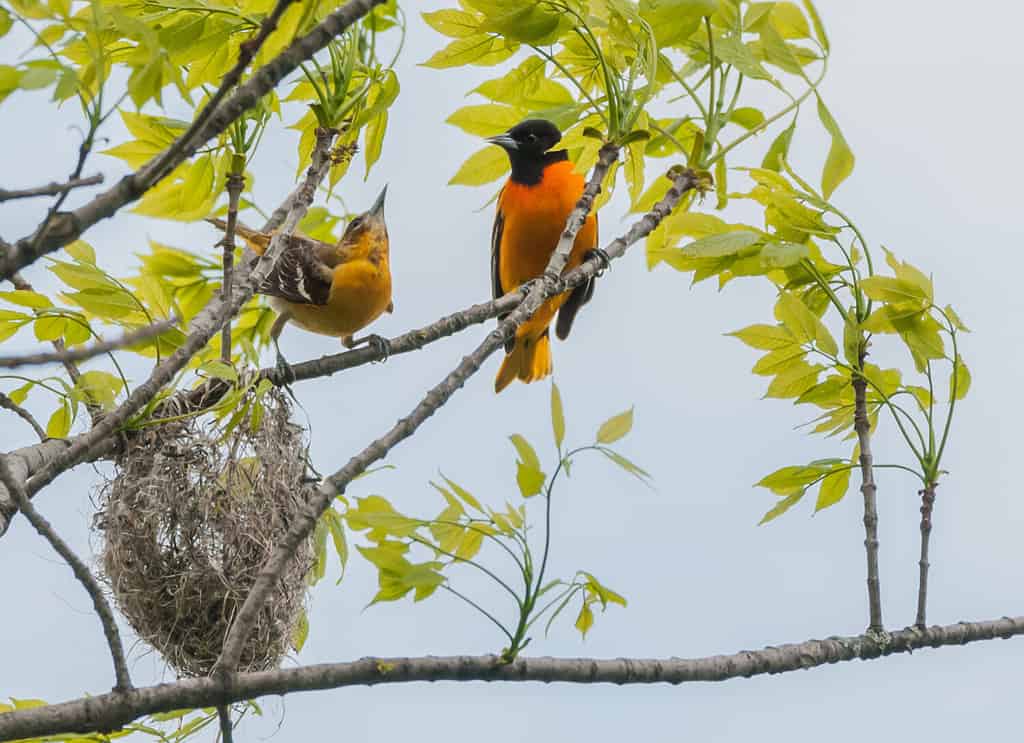Maryland is roughly 250 miles long and 100 miles wide. It is the 8th smallest state and one of the most diverse geographical landscapes of all 50 states. It is one of the original 13 colonies, which gives the state important historic and cultural relevance. Let’s learn more about the mighty state of Maryland.
Becoming a Part of the United States
Maryland became a colony in 1632 and was the seventh of the 13 original states to join the Union in 1788. However, conflicts with the bordering states of Virginia, Pennsylvania, and eventually the District of Columbia resulted in the cession of its boundaries to what the state is today.
Maryland’s Geography

The Eastern Shore of Maryland is one of five diverse regions in the state.
©Charles Goudy/Shutterstock.com
There are five distinct regions of Maryland: the Western Region, Capital Region, Central Region, Southern Region, and the Eastern Shore Region. Despite Maryland not being a very tall or large state, each region includes diverse landscapes, wildlife, and a unique connection to history.
1. Western Region
Western Maryland is for outdoor adventures. The highest point in the state — Hoye Crest, which sits at 3,360 feet of elevation on Backbone Mountain in Garrett County — is located here as well as numerous lakes and hiking trails like the Appalachian Trail.
2. Capital Region
The Capital Region is home to tech industries and research centers, but it wasn’t always that way. It began as fertile farmland for the early colonists. Fun fact, in 1791 the state donated land from Montgomery and Prince George’s counties that became part of what is now Washington, D.C!
3. Central Region
Central Maryland is known for its diversity from popular attractions in Annapolis and Baltimore to the peacefulness of horse country and the Chesapeake Bay. The government is also based in this region.
4. Southern Region
Southern Maryland is a historic region. Many generational farmers still harvest tobacco, corn, wheat, soybeans, fish, and shellfish from the land and nearby water sources like the Chesapeake Bay and the Potomac River.
5. Eastern Shore Region
The Eastern Shore of Maryland is what this coastal state is known for. The farmland feeds crops and cattle while the natural landmarks around the state beg to be explored.
Total Distance North to South: How Tall is Maryland?

Point Lookout State Park is the southernmost point in Maryland.
©Malachi Jacobs/Shutterstock.com
Maryland is not very tall, with a total distance from north to south of about 250 miles. Compared to other states, it is small in size and total distance but not in terms of population. As of 2020, it ranks as the 18th most populous state.
Northernmost Point in Maryland
Maryland has unique geographical borders. The northern boundary runs straight across the top of the state until it meets West Virginia to the west, Pennsylvania to the north, and Delaware to the east.
The most northern point of the state is along the border of Pennsylvania, northeast of Cumberland at 39.7230° N 78.7258° W.
The Center of Maryland
The center of the state is located in Prince George’s County at 39° 29.5′ N and 77° 22.3′ W. The closest nearby town is Davidsonville, a rural farming community until the 1960s when the first subdivisions were built.
Southernmost Point in Maryland
Point Lookout State Park is a peninsula at the southernmost point where the Potomac River meets the Chesapeake Bay. It is also the most southern location of the Potomac Heritage National Scenic Trail (PHT) in Maryland. This is where you find some of the most unique wildlife in the state!
Wildlife in Maryland

The Baltimore oriole is a bird commonly found in Maryland.
©Heather L. Hubbard/Shutterstock.com
Wildlife in Maryland is as diverse as its regional landscapes. You’ll find the most animals in the woods of western Maryland or along the shorelines of the Potomac and Patuxent Rivers or the Chesapeake Bay.
Here are the most common animals you can expect to see in Maryland:
- Baltimore orioles
- Robins
- Rockfish
- Striped bass
- Blue crabs
- Diamondback terrapins
- Baltimore checkerspot butterflies
- Bats
- Timber rattlesnakes
- Gray foxes
- Bobcats
- Eastern yellowjackets
- Eastern chipmunk
- White-tailed deer
- Wild horses (on Assateague Island)
Is Maryland a Small or Large State?

Dans Mountain in Allegany County, Maryland offers beautiful views of the state.
©Tara Ballard/Shutterstock.com
Maryland is the 42nd largest state by area. It’s relatively small, with a land area of 9,708 square miles and a water area of 2,694 square miles for a total of about 12,407 square miles.
Comparable States To Maryland By Size
Maryland is in an area on the East Coast surrounded by other small states like Delaware, New Jersey, and Connecticut. But which state is most comparable in size?
In terms of square mileage, Hawaii and Maryland are most similar. Total distance north to south, Maryland is about as tall as New Hampshire. When it comes to the population, Missouri and Maryland are most similar.
While Maryland might be comparable to other states, its diverse landscape, wildlife, and historical relevance put the state in a league of its own. Go visit Maryland for yourself to experience why it’s called “American in Miniature.” No matter where you find yourself, there’s plenty to explore!
The photo featured at the top of this post is © Nicole Glass Photography/Shutterstock.com
Thank you for reading! Have some feedback for us? Contact the AZ Animals editorial team.







